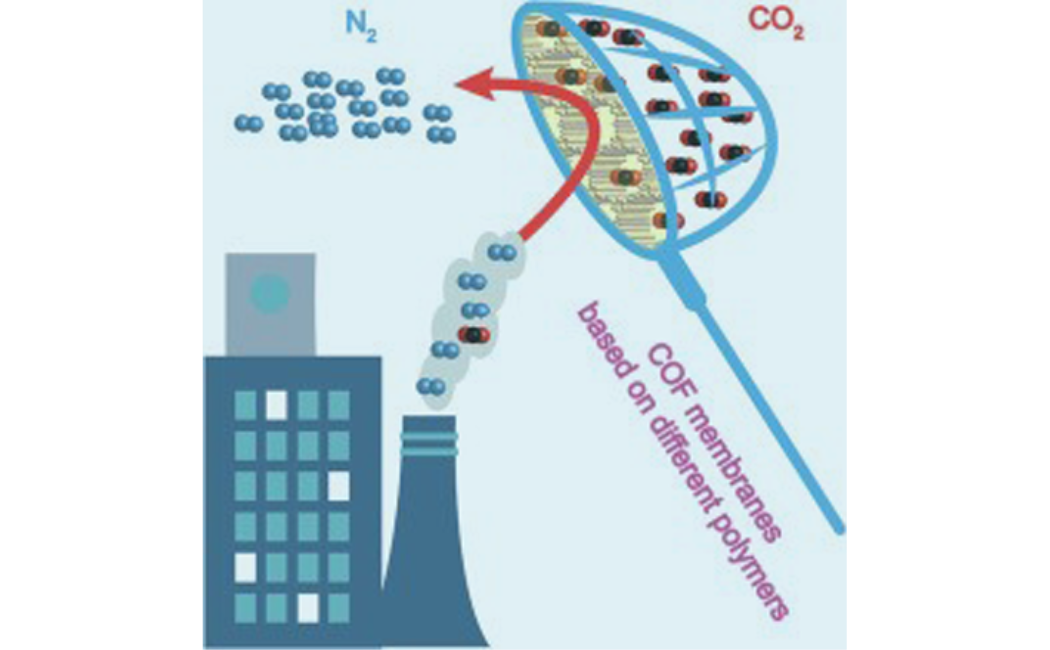
30 November, 2017
The use of an azine-linked covalent organic framework (ACOF-1) as filler in mixed-matrix membranes (MMMs) has been studied for the separation of CO2 from N2. To better understand the mechanisms that govern separation in complex composites, MMMs were prepared with different loadings of ACOF-1 and three different polymers as continuous phase: low flux-mid selectivity Matrimid®, mid flux-high selectivity Polyactive™ and high flux-low selectivity 6FDA:DAM. The homogeneous distribution of ACOF-1 together with the good adhesion between the ACOF-1 particles and the polymer matrices were confirmed by scanning electron microscopy. In mixed-gas CO2/N2 separation a clear influence of the polymer used was observed on the performance of the composite membranes. While for Matrimid® and 6FDA:DAM an overall enhancement of the polymer's separation properties could be achieved, in case of Polyactive™ penetration of the more flexible polymer into the COF porosity resulted in a decreased membrane permeability. The best improvement was obtained for Matrimid®-based MMMs, for which a selectivity increase from 29 to 35, together with an enhancement in permeability from 9.5 to 17.7 Barrer for 16 wt% COF loading, was observed. Our results demonstrate that the combination of the filler-polymeric matrix pair chosen is crucial. For a given filler the polymer performance improvement strongly depends on the polymeric matrix selected, where a good match between the discontinuous and continuous phase, both in the terms of compatibility and gas separation properties, is necessary to optimize membrane performance.
http://www.sciencedirect.com/science/article/pii/S0376738817323682